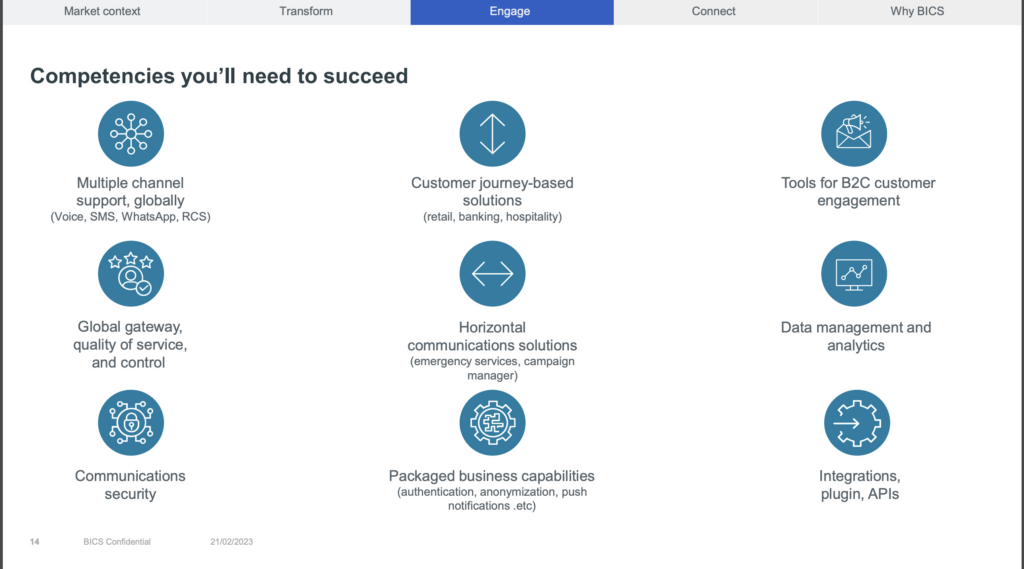As an IT professional, you understand the importance of communications technology to successful digital initiatives. But you may not recognize all the pieces that need to be in place to provide a solid foundation.
“Communications is an underappreciated part of companies’ digital transformation plans,” said Zeus Kerravala, principal analyst, ZK Research, at a recent Enterprise Connect webinar, “How the Emergence of Communications Technology Is Impacting the Enterprise’s Digital Transformation.” The webinar included BICS speakers Gabriel Salvate, business development director for IoT, and Francesco Graziano, go-to-market senior manager.
The big driver for digital initiatives is the shift to a communications experience (CX) economy, added Kerravala. To succeed, you need to understand your customers, personalize their experience and be sure you reach out with relevant information at the right time. “Too often we treat customers as demographic buckets,” he said. “So, brands that can personalize the CX interactions have gained an advantage.”
Basic competencies for success

Enterprises need nine basic technologies competencies to succeed in a digital transformation initiative, according to Salvate and Graziano. The following checklist can help IT leaders quickly spot both current strengths and areas where additional investments may be needed:
• Multiple channel support globally (voice, SMS, WhatsApp, RCS)
• Customer journey-based solutions (retail, banking, hospitality)
• Tools for B2C customer engagement
• Global gateway for consistent quality of service and control
• Horizontal communications solutions, such as emergency services and outbound campaigns
• Data management analytics
• Communications security
• Packaged business capabilities, such as customer authentication and push notifications
• Integrations with other services through plugins and APIs
Addressing the challenges
One of the challenges that holds organizations back is outdated technology. “You want to modernize all customer touchpoints and embrace digital technologies like 5G, IoT and the cloud, to keep ahead of the competition,” said Graziano.
Another obstacle is launching siloed digital initiatives that result in an inconsistent CX. For instance, marketing may be running an outbound promotion without passing that information on to agents in the inbound center. “You have to be sure to provide all your people with the right information when they need it so they are able to respond quickly and consistently to your customers.
Being able to access relevant data and analytics in real-time is a must-have for delivering an excellent experience, added Kerravala. “Successful companies today understand the data they hold and are able to use that information on a per-customer basis,” he said. In many cases that involves investing in AI tools to improve the CX.
Kerravala added that AI-based analytics can help organizations in many ways. For instance, they can support a proactive approach to offering promotions or managing purchases and invoices. “You can also use that information in customer research and post-purchase services.”
Integrating internal customer data sets is another fundamental step toward delivering a better CX, said Kerravala. “By the time your customers reach out to the contact center, they may already be halfway through the purchase journey,” he said. “Keep in mind that your customers may change channels during a conversation, and you need to keep up with them, since no one wants to repeat the same information over and over again.”
